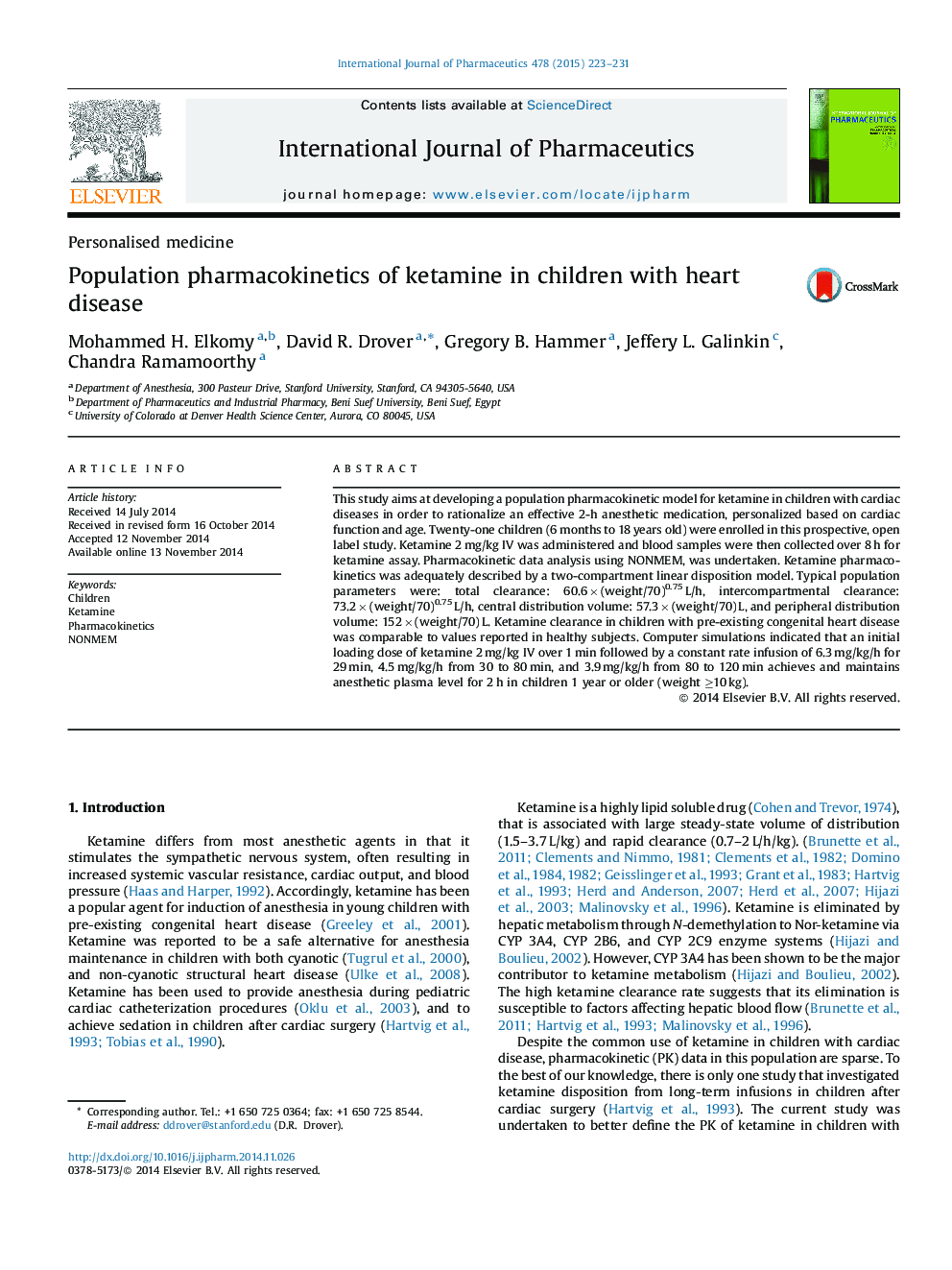| Article ID | Journal | Published Year | Pages | File Type |
|---|---|---|---|---|
| 2501606 | International Journal of Pharmaceutics | 2015 | 9 Pages |
This study aims at developing a population pharmacokinetic model for ketamine in children with cardiac diseases in order to rationalize an effective 2-h anesthetic medication, personalized based on cardiac function and age. Twenty-one children (6 months to 18 years old) were enrolled in this prospective, open label study. Ketamine 2 mg/kg IV was administered and blood samples were then collected over 8 h for ketamine assay. Pharmacokinetic data analysis using NONMEM, was undertaken. Ketamine pharmacokinetics was adequately described by a two-compartment linear disposition model. Typical population parameters were: total clearance: 60.6 × (weight/70)0.75 L/h, intercompartmental clearance: 73.2 × (weight/70)0.75 L/h, central distribution volume: 57.3 × (weight/70) L, and peripheral distribution volume: 152 × (weight/70) L. Ketamine clearance in children with pre-existing congenital heart disease was comparable to values reported in healthy subjects. Computer simulations indicated that an initial loading dose of ketamine 2 mg/kg IV over 1 min followed by a constant rate infusion of 6.3 mg/kg/h for 29 min, 4.5 mg/kg/h from 30 to 80 min, and 3.9 mg/kg/h from 80 to 120 min achieves and maintains anesthetic plasma level for 2 h in children 1 year or older (weight ≥10 kg).
Graphical abstractFigure optionsDownload full-size imageDownload high-quality image (214 K)Download as PowerPoint slide
